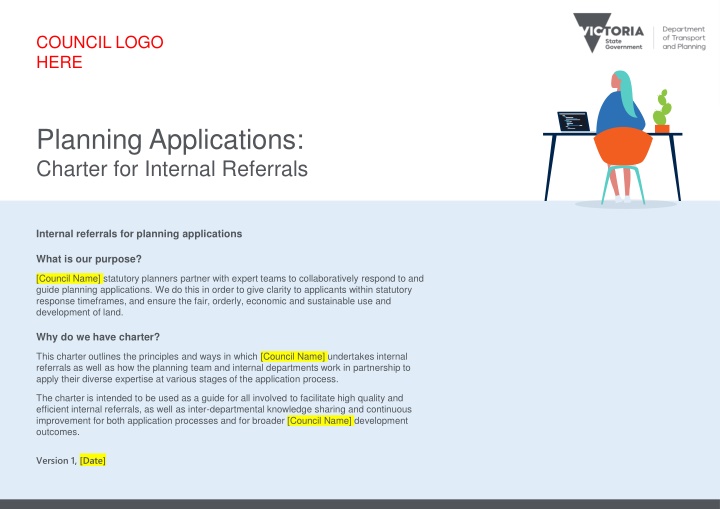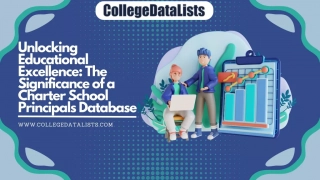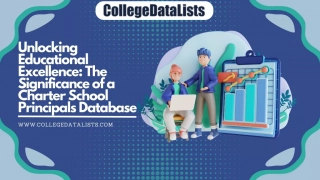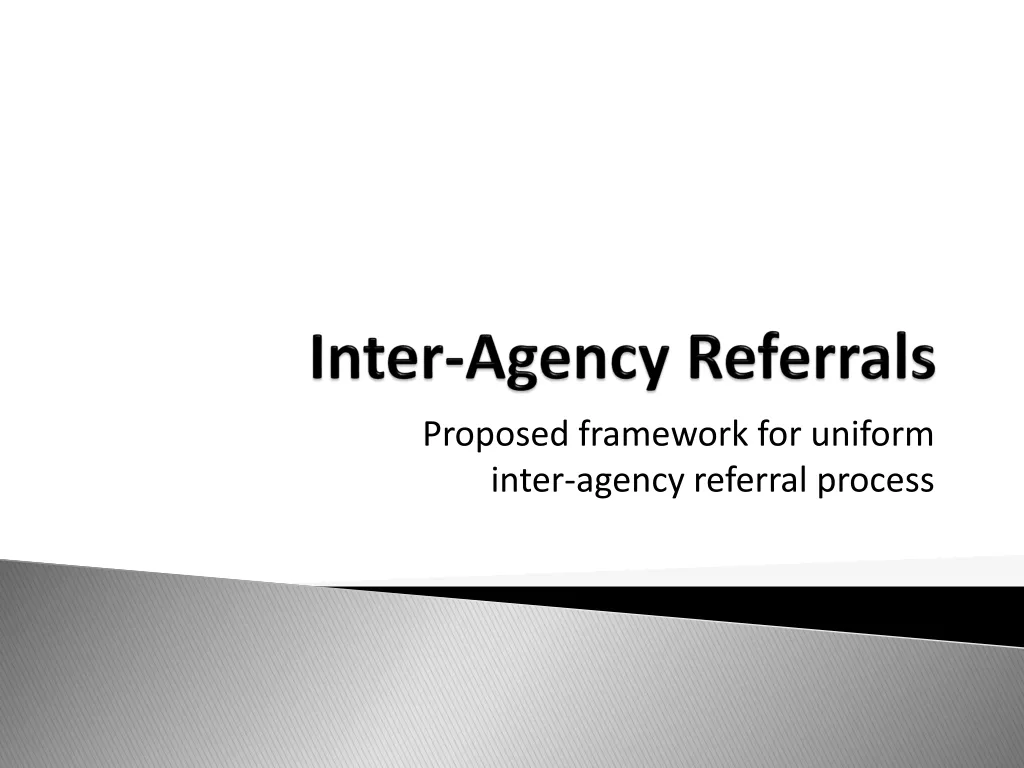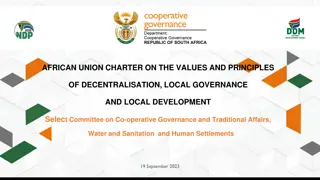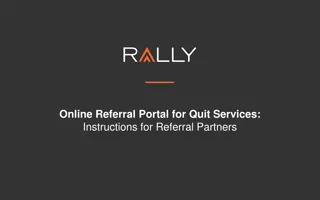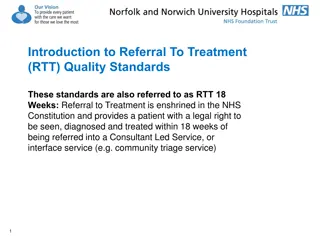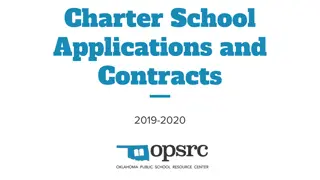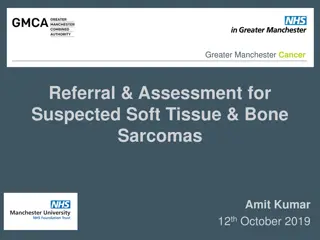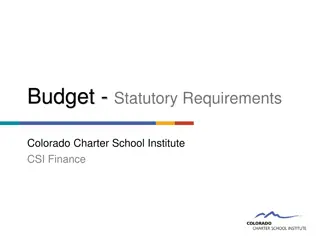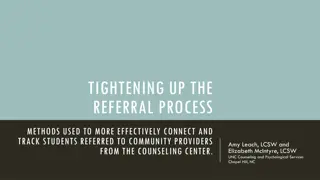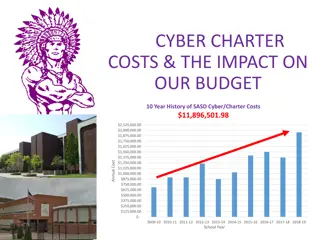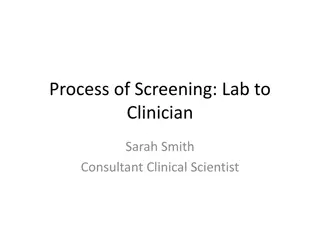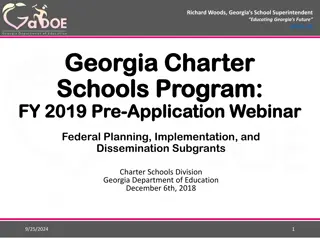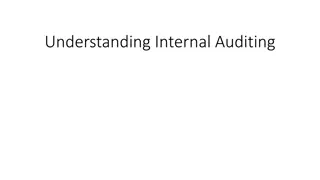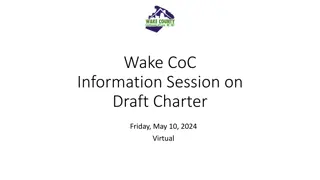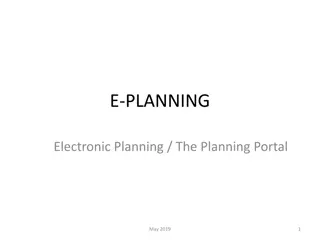Internal Referral Charter for Efficient Planning Applications
This charter outlines how [Council Name] collaborates internally to guide planning applications, ensuring transparency, consistency, and continuous improvement for better development outcomes. Teams focus on customer-centric solutions and collaborative problem-solving.
Download Presentation

Please find below an Image/Link to download the presentation.
The content on the website is provided AS IS for your information and personal use only. It may not be sold, licensed, or shared on other websites without obtaining consent from the author.If you encounter any issues during the download, it is possible that the publisher has removed the file from their server.
You are allowed to download the files provided on this website for personal or commercial use, subject to the condition that they are used lawfully. All files are the property of their respective owners.
The content on the website is provided AS IS for your information and personal use only. It may not be sold, licensed, or shared on other websites without obtaining consent from the author.
E N D
Presentation Transcript
COUNCIL LOGO HERE Planning Applications: Charter for Internal Referrals Internal referrals for planning applications What is our purpose? [Council Name] statutory planners partner with expert teams to collaboratively respond to and guide planning applications. We do this in order to give clarity to applicants within statutory response timeframes, and ensure the fair, orderly, economic and sustainable use and development of land. Why do we have charter? This charter outlines the principles and ways in which [Council Name] undertakes internal referrals as well as how the planning team and internal departments work in partnership to apply their diverse expertise at various stages of the application process. The charter is intended to be used as a guide for all involved to facilitate high quality and efficient internal referrals, as well as inter-departmental knowledge sharing and continuous improvement for both application processes and for broader [Council Name] development outcomes. Version 1, [Date] OFFICIAL - Sensitive
2 Our principles CUSTOMER FOCUSED COLLABORATION CUSTOMER FOCUSED CONTINUOUS IMPROVEMENT CLARITY AND CONSISTENCY COLLABORATION Keep front of mind the balance between delivering a good applicant experience and ensuring positive long-term outcomes for the community. Keep each other informed of any conversations with applicants to share information and ensure that the applicant feels like they are dealing with one team. The teams work as one to deliver on the best outcome, and everyone brings a 'collaborative problem-solving' mindset The Planning team seek internal referrals when the expertise of another team is required to fully assess an application. The Departments review applications focusing on their expertise and collaborate with other Departments if they require support. The Planning team and referral Departments work towards ideal timeframes (refer to process map below) and communicate if these cannot be met. Teams practice good record keeping to enable transparency (especially important for re-referrals). The Planning team refer applications only to relevant Departments and clearly outline the advice they are seeking. Keep front of mind the balance between delivering a good applicant experience and ensuring positive long-term outcomes for the community. The Planning team and referral Departments work in an agile way and keep iterating ways of working, processes and systems to continuously improve. The teams work as one to deliver on the best outcome, and everyone brings a 'collaborative problem-solving' mindset The Planning team provide context around their referral and point to specific documentation. The Planning team seek internal referrals when the expertise of another team is required to fully assess an application. Keep each other informed of any conversations with applicants to share information and ensure that the applicant feels like they are dealing with one team. If something goes wrong, everyone treats it as a learning opportunity instead of blaming a particular team/person. The Departments provide realistic and objective advice based on data, standards and policies to drive consistency in responses. Referees should always be able to stand behind their advice e.g. be prepared to defend it at VCAT. The Departments review applications focusing on their expertise and collaborate with other Departments if they require support. When relevant, the Planning team loops back with the Department after incorporating/not incorporating their advice and to communicate the outcome of the application. The Planning team and referral Departments work towards ideal timeframes (refer to process map below) and communicate if these cannot be met. [Software name] is used consistently to manage internal referrals as it enables transparency, but it is not intended to replace conversations between teams. The teams provide each other ongoing feedback. Teams practice good record keeping to enable transparency (especially important for re- referrals). Implementation notes: Principles are a guide and should be reviewed and updated to suit your Council s principals. OFFICIAL - Sensitive
3 The internal referrals process To the right is a simplified overview of the internal referrals process. The timelines are indicative and are meant to be used as a guide. The planning team and the Council departments work toward these ideal timeframes, keeping in mind that they may need to shift depending on the complexity of a given application. Any delays are communicated between teams to manage expectations. The Council departments prioritize referrals based on their due dates to help mitigate risk of delay. Planner receives clear advice and can easily take appropriate action Planning officer assesses application. If an internal referral is needed, they ensure the application is complete before submitting a referral to relevant department/s Referral departments receive application with all relevant documentation and assess the application to provide advice Planner conducts an initial review of the application. Planner assesses whether or not an internal referral is required for the application. Planner assesses whether the application should be discussed in meeting (optional). Planner prepares and submits their referral. Dept allocates referral to officer Referees review application in detail. Referees may contact other department s for further advice. Referees finalise and submit advice to the planning team Planner receives advice, incorporates into application Planner responds to applicant with next steps Planner action Referring department action Planner action 7 days 14 days 7 days (please note this may be longer if an RFI is issued) Implementation notes: Process steps and timeframes are a guide and should be reviewed and updated to suit your Council s processes. The process and timeframes should be consistent with the SLA and service flow. OFFICIAL - Sensitive
4 What systems and tools do we use, and for what? [Council name] currently use multiple communication channels to share information and content. Internal referrals are managed in [software name], as it enables teams to work collaboratively on applications and track changes over time. The system is not intended to replace conversations. Teams use email and meetings to help contextualise larger applications and solve problems. The Council uses [software name] to manage documentation associated with applications. [Document management name] [Software name] Email To send, track and respond to referrals To track changes and comments A management system to organise and manage documents For informal contextual conversations Implementation notes: Tools, document management and communication streams to be updated to suit systems your Council utilises OFFICIAL - Sensitive
